Integrating Virtual Reality and GIS Tools for Geological Mapping, Data Collection and Analysis: An Example from the Metaxa Mine, Santorini (Greece)
Abstract
Featured Application
Abstract
1. Introduction
2. Description of Volcanological Site Known as the “Metaxa Mine”
3. Immersive VR and GeaVR Visual Discovery Framework
4. DSM, Orthomosaic and VR Scenario Building
4.1. UAV Survey, Pictures and Ground Control Points Collection
4.2. Photogrammetry Processing for UAV-Captured Pictures
4.3. Photogrammetry Processing for Aerial-Captured Photos
5. Data Collection in IVR and Following GIS Data Analysis
- Upper boundary of excavation in the mine area,
- Eruption phase boundaries related to the Minoan eruptions, including measurements of their thickness,
- Areas covered by anthropogenic debris and machineries,
- Areas covered by natural debris flows.
6. New Outcomes
6.1. New Data for the Metaxa Mine by IVR and GIS Tasks
6.2. The Metaxa Mine as a Fundamental GeoSite
7. Final Remarks
Author Contributions
Funding
Acknowledgments
Conflicts of Interest
References
- Tong, X.; Liu, X.; Chen, P.; Liu, S.; Luan, K.; Li, L.; Liu, S.; Liu, X.; Xie, H.; Jin, Y.; et al. Integration of UAV-Based Photogrammetry and Terrestrial Laser Scanning for the Three-Dimensional Mapping and Monitoring of Open-Pit Mine Areas. Remote Sens. 2015, 7, 6635–6662. [Google Scholar] [CrossRef]
- Schmitz, B.; Holst, C.; Medic, T.; Lichti, D.; Kuhlmann, H. How to Efficiently Determine the Range Precision of 3D Terrestrial Laser Scanners. Sensors 2019, 19, 1466. [Google Scholar] [CrossRef] [PubMed]
- Rossi, P.; Mancini, F.; Dubbini, M.; Mazzone, F.; Capra, A. Combining nadir and oblique uav imagery to reconstruct quarry topography: Methodology and feasibility analysis. Eur. J. Remote Sens. 2017, 50, 211–221. [Google Scholar] [CrossRef]
- Shahbazi, M.; Sohn, G.; Théau, J.; Menard, P. Development and Evaluation of a UAV-Photogrammetry System for Precise 3D Environmental Modeling. Sensors 2015, 15, 27493–27524. [Google Scholar] [CrossRef]
- Harwin, S.; Lucieer, A. Assessing the Accuracy of Georeferenced Point Clouds Produced via Multi-View Stereopsis from Unmanned Aerial Vehicle (UAV) Imagery. Remote Sens. 2012, 4, 1573–1599. [Google Scholar] [CrossRef]
- Robiati, C.; Eyre, M.; Vanneschi, C.; Francioni, M.; Venn, A.; Coggan, J. Application of Remote Sensing Data for Evaluation of Rockfall Potential within a Quarry Slope. ISPRS Int. J. Geo-Inf. 2019, 8, 367. [Google Scholar] [CrossRef]
- Tibaldi, A.; Pasquarè, F.A.; Papanikolaou, D.; Nomikou, P. Discovery of a huge sector collapse at the Nisyros volcano, Greece, by on-land and offshore geological-structural data. J. Volcanol. Geotherm. Res. 2008, 177. [Google Scholar] [CrossRef]
- Tibaldi, A.; Bonali, F.L. Intra-arc and back-arc volcano-tectonics: Magma pathways at Holocene Alaska-Aleutian volcanoes. Earth-Sci. Rev. 2017, 167, 1–26. [Google Scholar] [CrossRef]
- Tibaldi, A.; Bonali, F.L. Contemporary recent extension and compression in the central Andes. J. Struct. Geol. 2018, 107, 73–92. [Google Scholar] [CrossRef]
- Tibaldi, A.; Bonali, F.L.; Vitello, F.; Delage, E.; Nomikou, P.; Antoniou, V.; Becciani, U.; de Vries, B.V.W.; Krokos, M.; Whitworth, M. Real world–based immersive Virtual Reality for research, teaching and communication in volcanology. Bull. Volcanol. 2020, 82. [Google Scholar] [CrossRef]
- Bonali, F.L.; Corazzato, C.; Tibaldi, A. Identifying rift zones on volcanoes: An example from La Réunion island, Indian Ocean. Bull. Volcanol. 2011, 73, 347–366. [Google Scholar] [CrossRef]
- Tadini, A.; Bonali, F.L.; Corazzato, C.; Cortés, J.A.; Tibaldi, A.; Valentine, G.A. Spatial distribution and structural analysis of vents in the lunar crater volcanic field (Nevada, USA). Bull. Volcanol. 2014, 76, 1–15. [Google Scholar] [CrossRef]
- Bond, A.; Sparks, R.S.J. The Minoan eruption of Santorini, Greece. J. Geol. Soc. 1976, 132, 1–16. [Google Scholar] [CrossRef]
- Friedrich, W.L.; Eriksen, U.; Tauber, H.; Heinemeier, J.; Rud, N.; Thomsen, M.S.; Buchardt, B. Existence of a water-filled caldera prior to the Minoan eruption of Santorini, Greece. Naturwissenschaften 1988, 75, 567–569. [Google Scholar] [CrossRef]
- Druitt, T.H.; Edwards, L.; Mellors, R.M.; Pyle, D.M.; Sparks, R.S.J.; Lanphere, M.; Davies, M.; Barreirio, B. Santorini Volcano. Geol. Soc. Mem. 1999, 19, 165. [Google Scholar]
- Johnston, E.N.; Sparks, R.S.J.; Phillips, J.C.; Carey, S. Revised estimates for the volume of the late bronze age minoan eruption, santorini, Greece. J. Geol. Soc. 2014, 171, 583–590. [Google Scholar] [CrossRef]
- Nomikou, P.; Papanikolaou, D.; Alexandri, M.; Sakellariou, D.; Rousakis, G. Submarine volcanoes along the aegean volcanic arc. Tectonophysics 2013, 597–598, 123–146. [Google Scholar] [CrossRef]
- Hooft, E.E.E.; Nomikou, P.; Toomey, D.R.; Lampridou, D.; Getz, C.; Christopoulou, M.E.; O’Hara, D.; Arnoux, G.M.; Bodmer, M.; Gray, M.; et al. Backarc tectonism, volcanism, and mass wasting shape seafloor morphology in the Santorini-Christiana-Amorgos region of the Hellenic Volcanic Arc. Tectonophysics 2017, 712–713, 396–414. [Google Scholar] [CrossRef]
- Antoniou, V.; Nomikou, P.; Bardouli, P.; Sorotou, P.; Luca Bonali, F.; Ragia, L.; Metaxas, A. The story map for Metaxa mine (Santorini, Greece): A unique site where history and volcanology meet each other. In Proceedings of the GISTAM 2019—5th International Conference on Geographical Information Systems Theory, Applications and Management, Heraklion, Greece, 3–5 May 2019; SciTePress: Setubal, Portugal, 2019; pp. 212–219. [Google Scholar]
- Pasquarè Mariotto, F.; Bonali, F.L.; Tibaldi, A.; Rust, D.; Oppizzi, P.; Cavallo, A. Holocene displacement field at an emerged oceanic transform-ridge junction: The Husavik-Flatey Fault-Gudfinnugja Fault system, North Iceland. J. Struct. Geol. 2015, 75, 118–134. [Google Scholar] [CrossRef]
- Bonali, F.L.; Tibaldi, A.; Pasquaré Mariotto, F.; Saviano, D.; Meloni, A.; Sajovitz, P. Geometry, oblique kinematics and extensional strain variation along a diverging plate boundary: The example of the northern Theistareykir Fissure Swarm, NE Iceland. Tectonophysics 2019, 756, 57–72. [Google Scholar] [CrossRef]
- Rathje, E.M.; Franke, K. Remote sensing for geotechnical earthquake reconnaissance. Soil Dyn. Earthq. Eng. 2016, 91, 304–316. [Google Scholar] [CrossRef]
- Müller, D.; Walter, T.R.; Schöpa, A.; Witt, T.; Steinke, B.; Gudmundsson, M.T.; Dürig, T. High-Resolution Digital Elevation Modeling from TLS and UAV Campaign Reveals Structural Complexity at the 2014/2015 Holuhraun Eruption Site, Iceland. Front. Earth Sci. 2017, 5, 59. [Google Scholar] [CrossRef]
- Gao, M.; Xu, X.; Klinger, Y.; van der Woerd, J.; Tapponnier, P. High-resolution mapping based on an Unmanned Aerial Vehicle (UAV) to capture paleoseismic offsets along the Altyn-Tagh fault, China. Sci. Rep. 2017, 7, 8281. [Google Scholar] [CrossRef]
- Walter, T.R.; Jousset, P.; Allahbakhshi, M.; Witt, T.; Gudmundsson, M.T.; Hersir, G.P. Underwater and drone based photogrammetry reveals structural control at Geysir geothermal field in Iceland. J. Volcanol. Geotherm. Res. 2020, 391. [Google Scholar] [CrossRef]
- Dering, G.M.; Micklethwaite, S.; Thiele, S.T.; Vollgger, S.A.; Cruden, A.R. Review of drones, photogrammetry and emerging sensor technology for the study of dykes: Best practises and future potential. J. Volcanol. Geotherm. Res. 2019, 373, 148–166. [Google Scholar] [CrossRef]
- Bonali, F.L.; Tibaldi, A.; Marchese, F.; Fallati, L.; Russo, E.; Corselli, C.; Savini, A. UAV-based surveying in volcano-tectonics: An example from the Iceland rift. J. Struct. Geol. 2019, 121, 46–64. [Google Scholar] [CrossRef]
- Benassi, F.; Dall’Asta, E.; Diotri, F.; Forlani, G.; Morra di Cella, U.; Roncella, R.; Santise, M. Testing Accuracy and Repeatability of UAV Blocks Oriented with GNSS-Supported Aerial Triangulation. Remote Sens. 2017, 9, 172. [Google Scholar] [CrossRef]
- Burns, J.H.R.; Delparte, D. Comparison of commercial structure-from-motion photogrammetry software used for underwater three-dimensional modeling of coral reef environments. In Proceedings of the International Archives of the Photogrammetry, Remote Sensing and Spatial Information Sciences-ISPRS Archives, Nafplio, Greece, 1–3 March 2017; Volume 42, pp. 127–131. [Google Scholar]
- Cook, K.L. An evaluation of the effectiveness of low-cost UAVs and structure from motion for geomorphic change detection. Geomorphology 2017, 278, 195–208. [Google Scholar] [CrossRef]
- Pavlis, T.L.; Mason, K.A. The new world of 3D geologic mapping. Gsa Today 2017, 27, 4–10. [Google Scholar] [CrossRef]
- Gerloni, I.G.; Carchiolo, V.; Vitello, F.R.; Sciacca, E.; Becciani, U.; Costa, A.; Riggi, S.; Bonali, F.L.; Russo, E.; Fallati, L.; et al. Immersive Virtual Reality for Earth Sciences. FedCSIS 2018. [Google Scholar] [CrossRef]
- Krokos, M.; Luca Bonali, F.; Vitello, F.; Antoniou, V.; Becciani, U.; Russo, E.; Marchese, F.; Fallati, L.; Nomikou, P.; Kearl, M.; et al. Workflows for virtual reality visualisation and navigation scenarios in earth sciences. In Proceedings of the GISTAM 2019-5th International Conference on Geographical Information Systems Theory, Applications and Management, Heraklion, Greece, 3–5 May 2019; SciTePress: Setubal, Portugal, 2019; pp. 297–304. [Google Scholar]
- Pouliot, J.; Lachance, B.; Brisebois, A.; Rabaud, O.; Kirkwood, D. 3D geological modeling: Are GIS or CAD appropriate. In Proceedings of the ISPRS Workshop on Spatial, Temporal and Mulit-Dimensional Data Modelling and Analysis, Québec, QC, Canada, 2–3 October 2003; pp. 2–3. [Google Scholar]
- Tiede, D.; Blaschke, T. A Two-Way Workflow for Integrating CAD, 3D Visualization and Spatial Analysis in a GIS Environment. In Proceedings of the 6th International Conference for Information Technologies in Landscape Architecture: Real-Time Visualization and Participation, Visualization in Landscape Architecture; Wichmann-Verlag: Heidelberg, Germany, 2005. [Google Scholar]
- Wang, W.; Lv, Z.; Li, X.; Xu, W.; Zhang, B.; Zhang, X. Virtual reality based GIS analysis platform. In Proceedings of the 22nd International Conference on Neural Information Processing, Istanbul, Turkey, 9–12 November 2015; Springer International Publishing: New York, NY, USA, 2015; pp. 638–645. [Google Scholar]
- Wang, W.; Lv, Z.; Li, X.; Xu, W.; Zhang, B.; Zhang, X. Virtual reality based GIS analysis platform. In Proceedings of the Lecture Notes in Computer Science (Including Subseries Lecture Notes in Artificial Intelligence and Lecture Notes in Bioinformatics); Springer: Berlin/Heidelberg, Germany, 2015; Volume 9490, pp. 638–645. [Google Scholar]
- Moser, J.; Albrecht, F.; Kosar, B. Beyond Visualisation-3D GIS analyses for virtual city models. In Proceedings of the 5th International 3D GeoInfo Conference 2010, XXXVIII-4/W15, 2010, Berlin, Germany, 3–4 November 2010; pp. 143–146. [Google Scholar]
- Wu, Q.; Xu, H.; Zou, X. An effective method for 3D geological modeling with multi-source data integration. Comput. Geosci. 2005, 31, 35–43. [Google Scholar] [CrossRef]
- Huang, B.; Jiang, B.; Li, H. An integration of GIS, virtual reality and the internet for visualization, analysis and exploration of spatial data. Int. J. Geogr. Inf. Sci. 2001, 15, 439–456. [Google Scholar] [CrossRef]
- Lv, Z.; Réhman, S.U.; Chen, G. WebVRGIS: A P2P network engine for VR data and GIS analysis. In Proceedings of the Lecture Notes in Computer Science (Including Subseries Lecture Notes in Artificial Intelligence and Lecture Notes in Bioinformatics); Springer: Berlin/Heidelberg, Germany, 2013; Volume 8226 LNCS, pp. 503–510. [Google Scholar]
- Radianti, J.; Majchrzak, T.A.; Fromm, J.; Wohlgenannt, I. A systematic review of immersive virtual reality applications for higher education: Design elements, lessons learned, and research agenda. Comput. Educ. 2020, 147, 103778. [Google Scholar] [CrossRef]
- Karátson, D.; Telbisz, T.; Gertisser, R.; Strasser, T.; Nomikou, P.; Druitt, T.; Vereb, V.; Quidelleur, X.; Kósik, S. Constraining the landscape of Late Bronze Age Santorini prior to the Minoan eruption: Insights from volcanological, geomorphological and archaeological findings. J. Volcanol. Geotherm. Res. 2020, 401. [Google Scholar] [CrossRef]
- Druitt, T.H. New insights into the initiation and venting of the Bronze-Age eruption of Santorini (Greece), from component analysis. Bull. Volcanol. 2014, 76, 1–21. [Google Scholar] [CrossRef]
- Pyle, D.M.; Elliott, J.R. Quantitative morphology, recent evolution, and future activity of the Kameni Islands volcano, Santorini, Greece. Geosphere 2006, 2, 253–268. [Google Scholar] [CrossRef]
- Nomikou, P.; Parks, M.M.; Papanikolaou, D.; Pyle, D.M.; Mather, T.A.; Carey, S.; Watts, A.B.; Paulatto, M.; Kalnins, M.L.; Livanos, I.; et al. The emergence and growth of a submarine volcano: The Kameni islands, Santorini (Greece). Geol. Res. J. 2014, 1–2, 8–18. [Google Scholar] [CrossRef]
- Nomikou, P.; Druitt, T.H.; Hübscher, C.; Mather, T.A.; Paulatto, M.; Kalnins, L.M.; Kelfoun, K.; Papanikolaou, D.; Bejelou, K.; Lampridou, D.; et al. Post-eruptive flooding of Santorini caldera and implications for tsunami generation. Nat. Commun. 2016, 7, 1–10. [Google Scholar] [CrossRef]
- Friedrich, W.L.; Kromer, B.; Friedrich, M.; Heinemeier, J.; Pfeiffer, T.; Talamo, S. Santorini eruption radiocarbon dated to 1627-1600 B.C. Science 2006, 312, 548. [Google Scholar] [CrossRef]
- Pyle, D.M. The global impact of the minoan eruption of Santorini, Greece. Environ. Geol. 1997, 30, 59–61. [Google Scholar] [CrossRef]
- Karátson, D.; Gertisser, R.; Telbisz, T.; Vereb, V.; Quidelleur, X.; Druitt, T.; Nomikou, P.; Kósik, S. Towards reconstruction of the lost Late Bronze Age intra-caldera island of Santorini, Greece. Sci. Rep. 2018, 8, 7026. [Google Scholar] [CrossRef] [PubMed]
- Livadaros, R. The story, exploitation and social dimension of Santorini mines. In Proceedings of the Scientific Conference Historical Mines in the Aegean 19th–20th Century, Milos, Greece, 3–5 October 2003; pp. 115–146. [Google Scholar]
- Tsoutrelis, C.; Livadaros, R. Method of exploiting the Thiraean land at Santorini Mines. PyrophorusNtua 1995, 17, 64–69. [Google Scholar]
- Choi, D.H.; Dailey-Hebert, A.; Estes, J.S. Emerging Tools and Applications of Virtual Reality in Education; IGI Global: Hershey, PA, USA, 2016; ISBN 9781466698383. [Google Scholar]
- Trinks, I.; Clegg, P.; McCaffrey, K.; Jones, R.; Hobbs, R.; Holdsworth, B.; Holliman, N.; Imber, J.; Waggott, S.; Wilson, R. Mapping and analysing virtual outcrops. Vis. Geosci. 2005, 10, 13–19. [Google Scholar] [CrossRef]
- Andrade, A. Game engines: A survey. Eai Endorsed Trans. Game-Based Learn. 2015, 2, 150615. [Google Scholar] [CrossRef]
- Christopoulou, E.; Xinogalos, S. Overview and Comparative Analysis of Game Engines for Desktop and Mobile Devices. Int. J. Serious Games 2017, 4. [Google Scholar] [CrossRef]
- De Beni, E.; Cantarero, M.; Messina, A. UAVs for volcano monitoring: A new approach applied on an active lava flow on Mt. Etna (Italy), during the 27 February–2 March 2017 eruption. J. Volcanol. Geotherm. Res. 369, 250–262. [CrossRef]
- Bonali, F.L.; Tibaldi, A.; Corti, N.; Fallati, L.; Russo, E. Reconstruction of Late Pleistocene-Holocene Deformation through Massive Data Collection at Krafla Rift (NE Iceland) Owing to Drone-Based Structure-from-Motion Photogrammetry. Appl. Sci. 2020, 10, 6759. [Google Scholar] [CrossRef]
- Smith, M.W.; Carrivick, J.L.; Quincey, D.J. Structure from motion photogrammetry in physical geography. Prog. Phys. Geogr. Earth Environ. 2016, 40, 247–275. [Google Scholar] [CrossRef]
- Esposito, G.; Mastrorocco, G.; Salvini, R.; Oliveti, M.; Starita, P. Application of UAV photogrammetry for the multi-temporal estimation of surface extent and volumetric excavation in the Sa Pigada Bianca open-pit mine, Sardinia, Italy. Environ. Earth Sci. 2017, 76, 1–16. [Google Scholar] [CrossRef]
- Ouédraogo, M.M.; Degré, A.; Debouche, C.; Lisein, J. The evaluation of unmanned aerial system-based photogrammetry and terrestrial laser scanning to generate DEMs of agricultural watersheds. Geomorphology 2014, 214, 339–355. [Google Scholar] [CrossRef]
- Ruzgienė, B.; Aksamitauskas, Č.; Daugėla, I.; Prokopimas, Š.; Puodžiukas, V.; Rekus, D. UAV photogrammetry for road surface modelling. Balt. J. Road Bridge Eng. 2015, 10, 151–158. [Google Scholar] [CrossRef]
- Chandler, J.H.; Buckley, S.; Carpenter, M.B.; Keane, C.M.; Handbook, G. Structure from motion (SFM) photogrammetry vs terrestrial laser scanning. In Geoscience Handbook; American Geosciences Institute: Alexandria, VA, USA, 2016. [Google Scholar]
- Tonkin, T.; Midgley, N. Ground-Control Networks for Image Based Surface Reconstruction: An Investigation of Optimum Survey Designs Using UAV Derived Imagery and Structure-from-Motion Photogrammetry. Remote Sens. 2016, 8, 786. [Google Scholar] [CrossRef]
- Verhoeven, G. Taking computer vision aloft-archaeological three-dimensional reconstructions from aerial photographs with photoscan. Archaeol. Prospect. 2011, 18, 67–73. [Google Scholar] [CrossRef]
- Brunier, G.; Fleury, J.; Anthony, E.J.; Gardel, A.; Dussouillez, P. Close-range airborne Structure-from-Motion Photogrammetry for high-resolution beach morphometric surveys: Examples from an embayed rotating beach. Geomorphology 2016, 261, 76–88. [Google Scholar] [CrossRef]
- Paraskevas, M.; Paradissis, D.; Raptakis, C.; Nomikou, P.; Hooft, E.; Papanikolaou, D. Geophysical Approach of the Gravitational field in Santorini Volcanic Group. In Proceedings of the JISDM 2019, Athens, Greece, 15–17 May 2019. [Google Scholar]
- Pasquaré Mariotto, F.; Venturini, C. Strategies and Tools for Improving Earth Science Education and Popularization in Museums. Geoheritage 2017, 9, 187–194. [Google Scholar] [CrossRef]
- Venturini, C.; Pasquaré Mariotto, F. Geoheritage Promotion through an Interactive Exhibition: A Case Study from the Carnic Alps, NE Italy. Geoheritage 2019, 11, 459–469. [Google Scholar] [CrossRef]
- Ruban, D.A. Quantification of geodiversity and its loss. Proc. Geol. Assoc. 2010, 121, 326–333. [Google Scholar] [CrossRef]
- Ruban, D.A.; Kuo, I. Essentials of geological heritage site (geosite) management: A conceptual assessment of interests and conflicts. Nat. Nascosta 2010, 41, 16–31. [Google Scholar]
- Reynard, E. Geosite. In Encyclopedia of Geomorphology; Goudie, A.S., Ed.; Routledge: London, UK, 2014; Volume 1. [Google Scholar]
- Zorina, S.O.; Silantiev, V.V. Geosites, Classification of. In Encyclopedia of Mineral and Energy Policy; Springer: Berlin/Heidelberg, Germany, 2014; pp. 1–4. [Google Scholar]
- Reynard, E.; Fontana, G.; Kozlik, L.; Scapozza, C. A Method for Assessing Scientific and Additional Values of Geomorphosites. Geogr. Helv. 2007, 62, 148–158. [Google Scholar] [CrossRef]
- Fernanda De Lima, F.; Brilha, J.B.; Salamuni, E. Inventorying Geological Heritage in Large Territories: A Methodological Proposal Applied to Brazil. Geoheritage 2010, 2, 91–99. [Google Scholar] [CrossRef]
- Grandgirard, V. L’évaluation des géotopes. Geol. Insubr. 1999, 4, 59–66. [Google Scholar]
- Pasquaré Mariotto, F.; Bonali, F.L.; Venturini, C. Iceland, an Open-Air Museum for Geoheritage and Earth Science Communication Purposes. Resources 2020, 9, 14. [Google Scholar] [CrossRef]
- Brilha, J. Inventory and Quantitative Assessment of Geosites and Geodiversity Sites: A Review. Geoheritage 2016, 8, 119–134. [Google Scholar] [CrossRef]
- Coratza, P.; Giusti, C.; Quaternario, I. Methodological proposal for the assessment of the scientific quality of geomorphosites. J. Quat. Sci. 2005, 18, 307–313. [Google Scholar]
- Coratza, P.; Panizza, M. (Eds.) Geomorphology and Cultural Heritage—English; ISPRA: Rome, Italy, 2009.
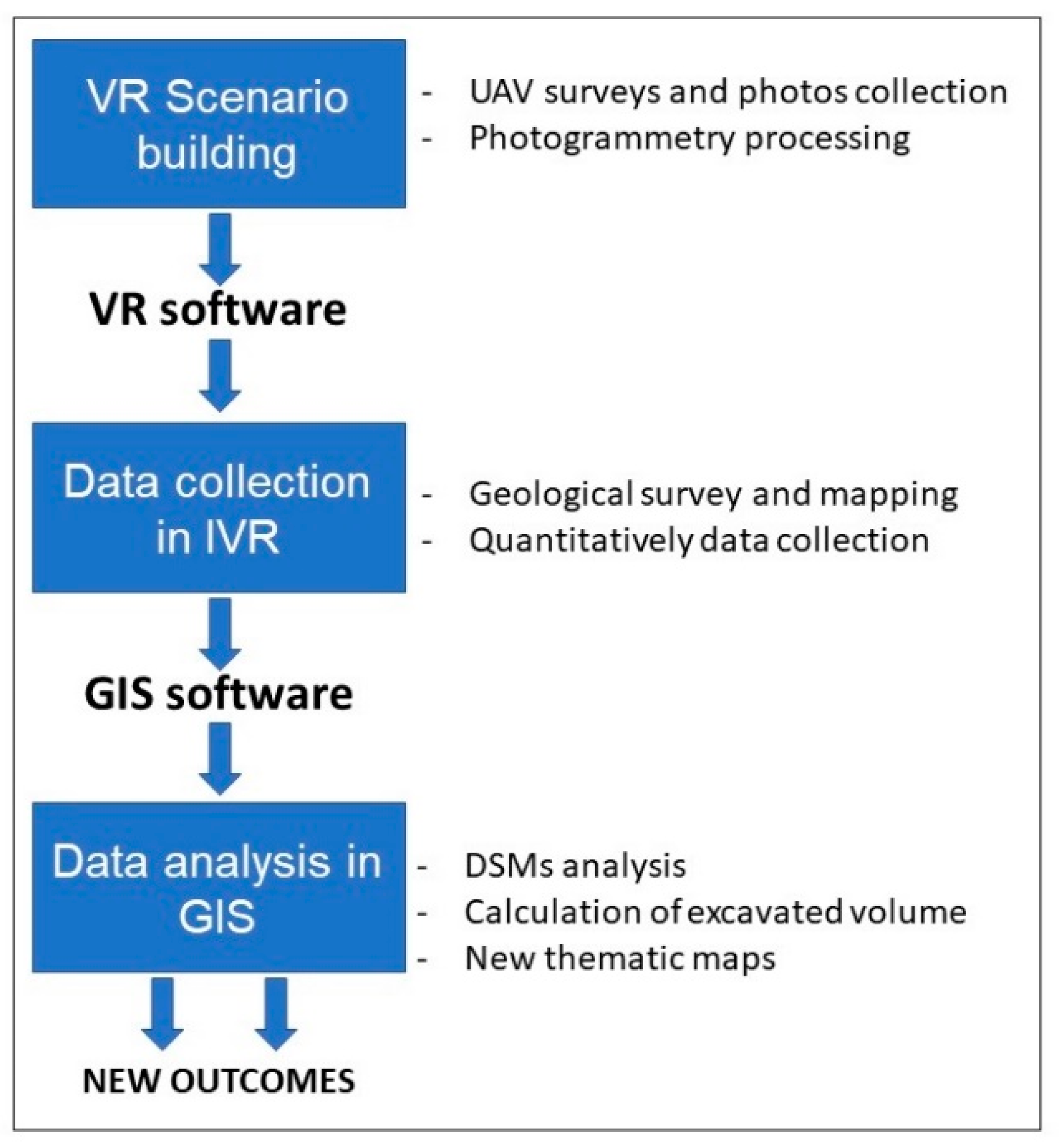

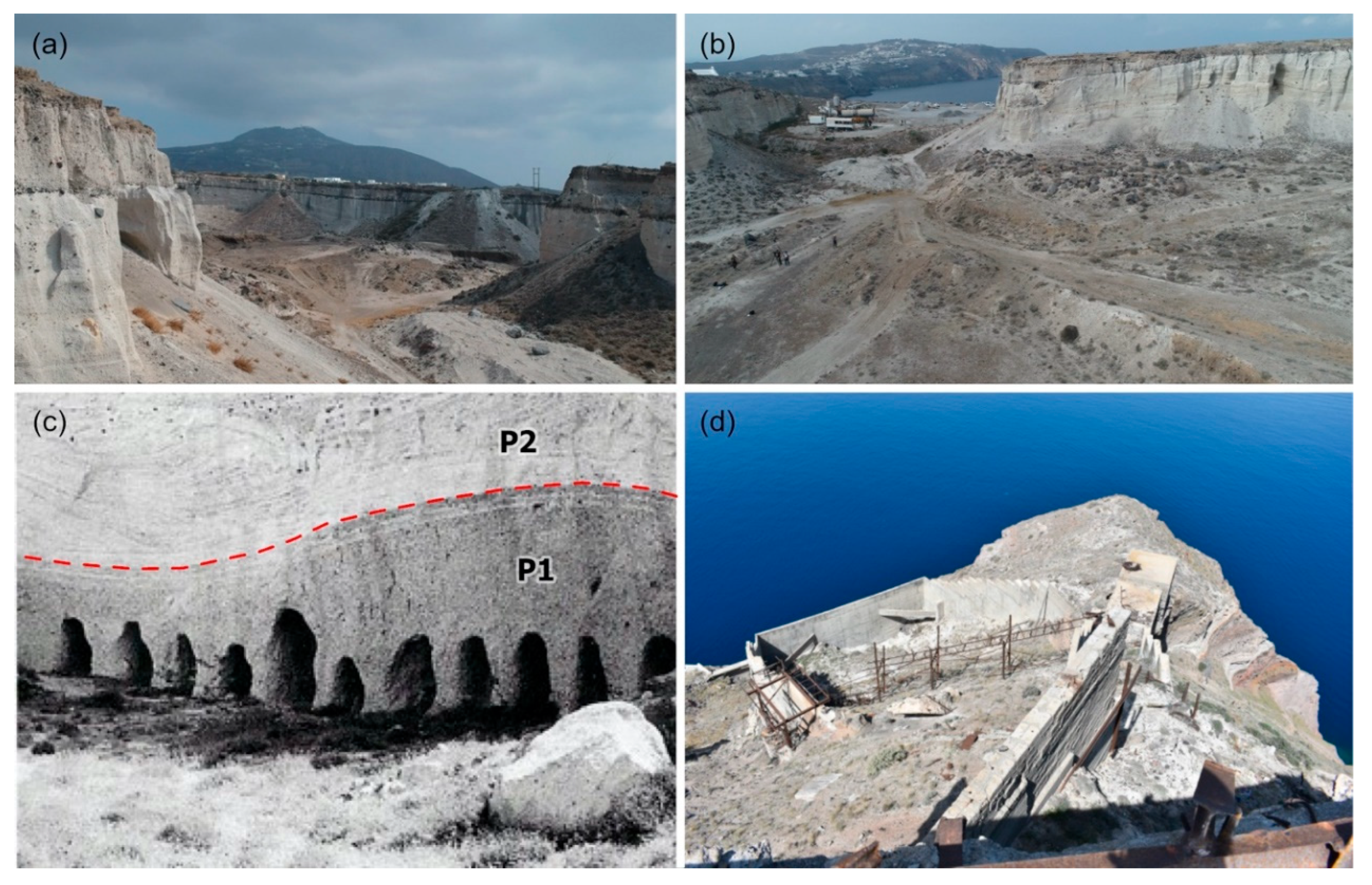
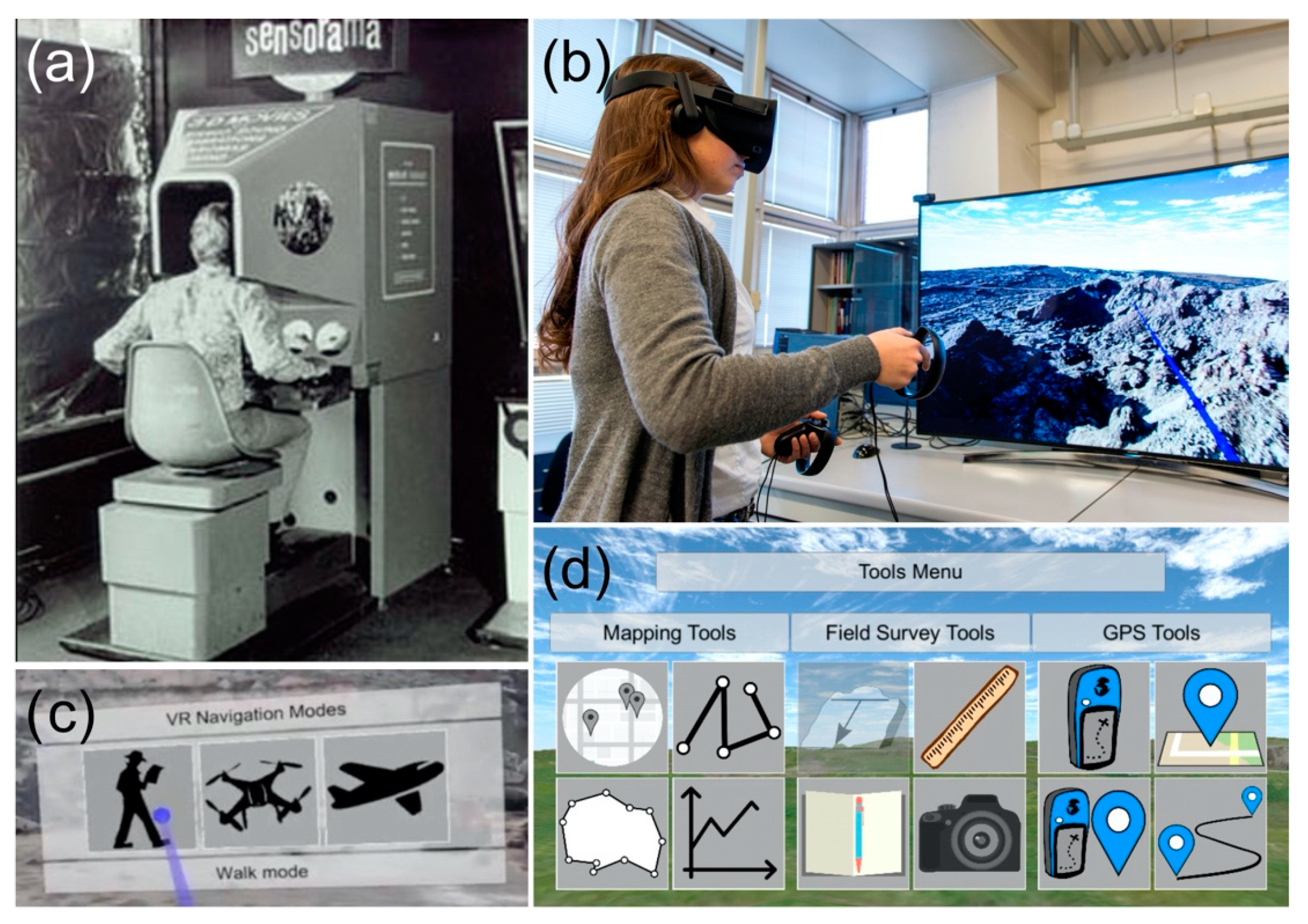
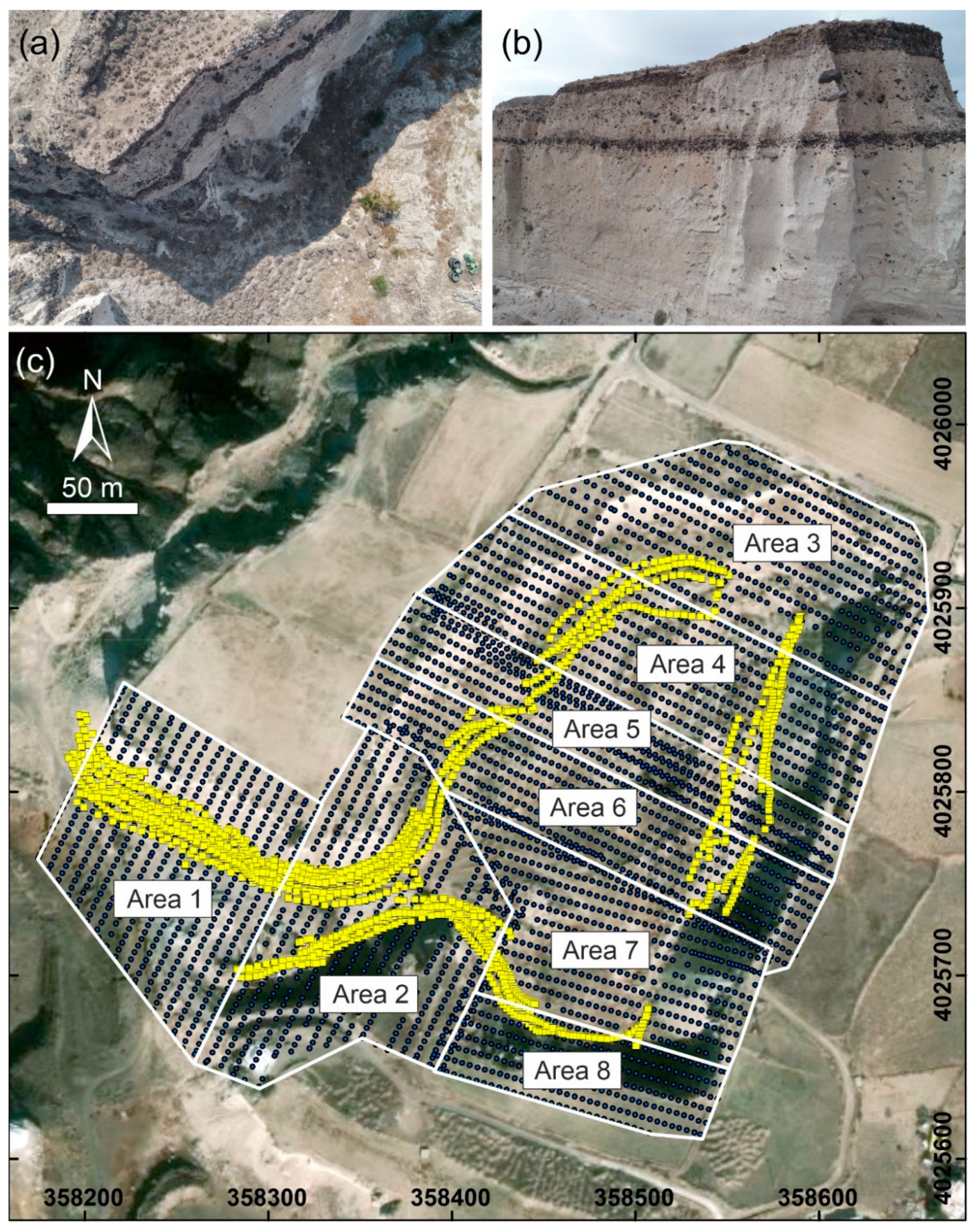

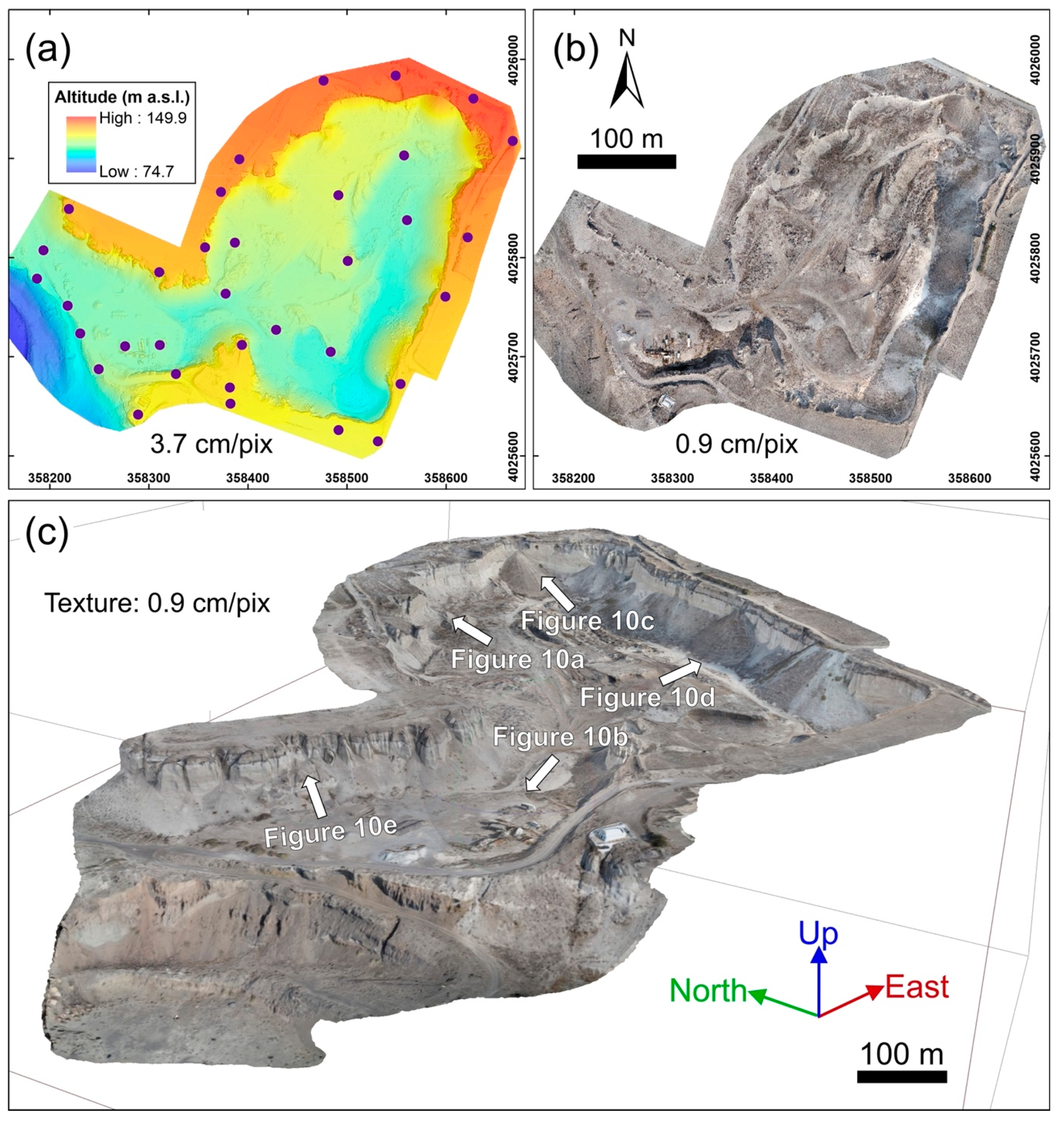

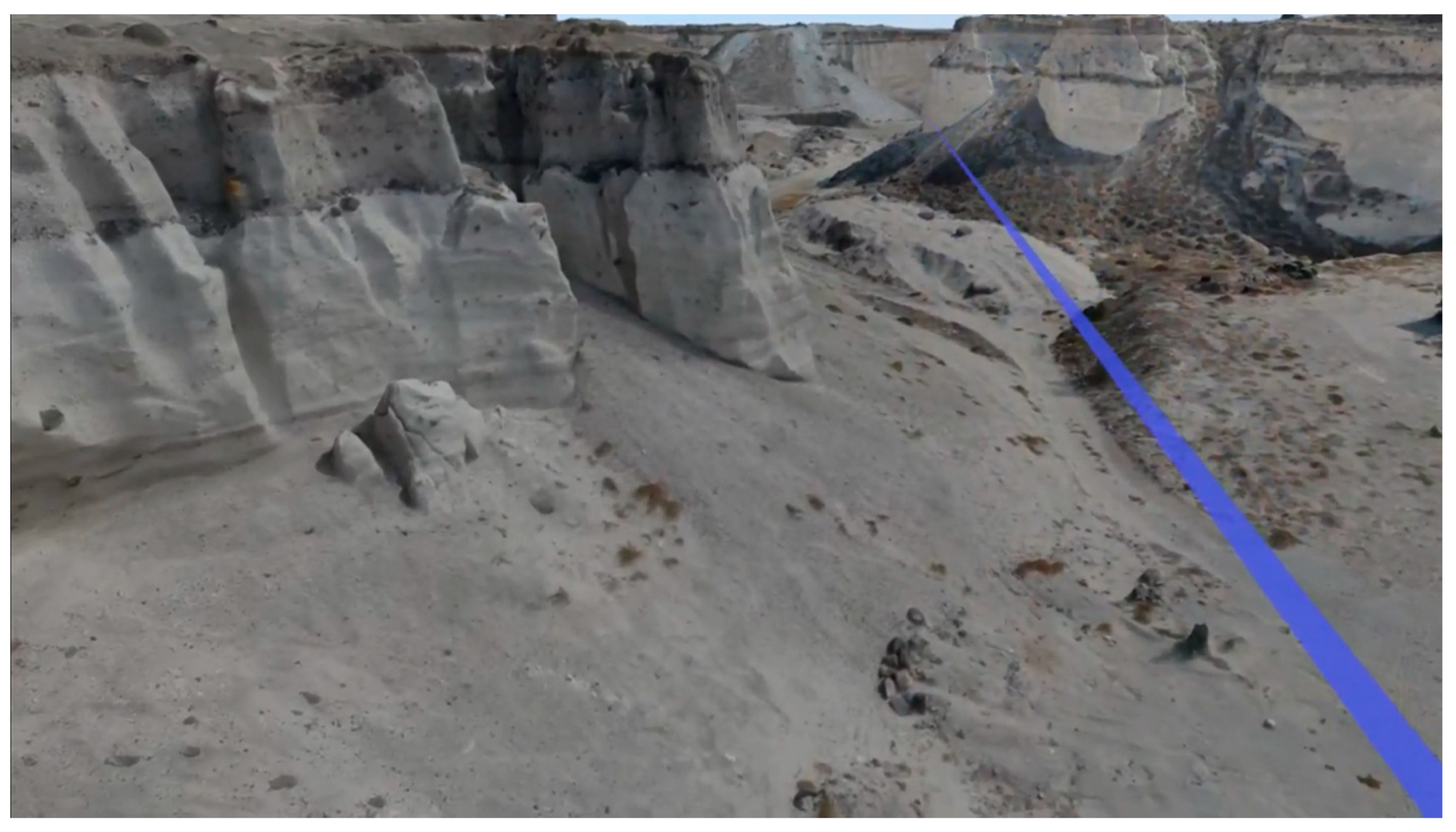
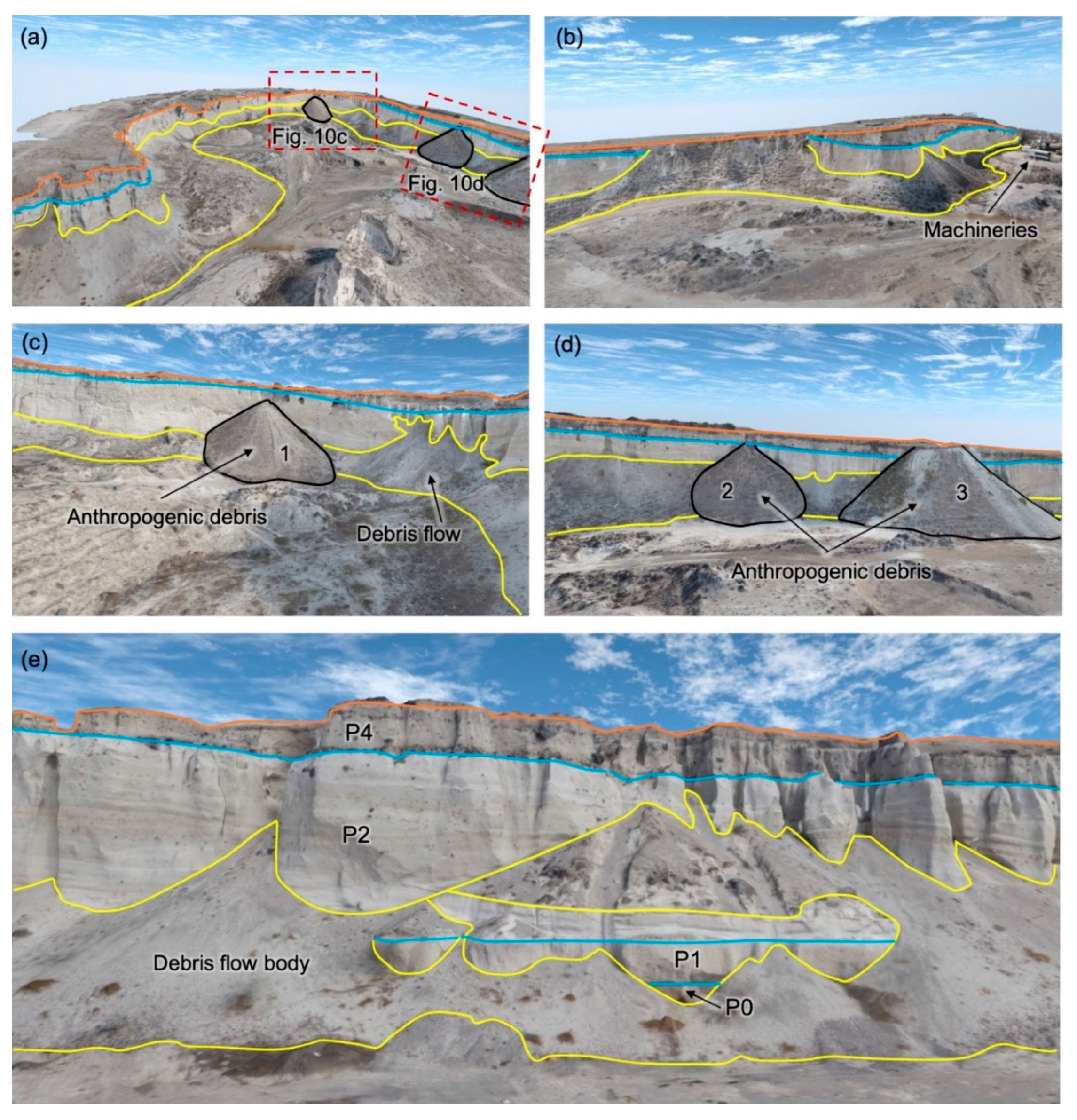


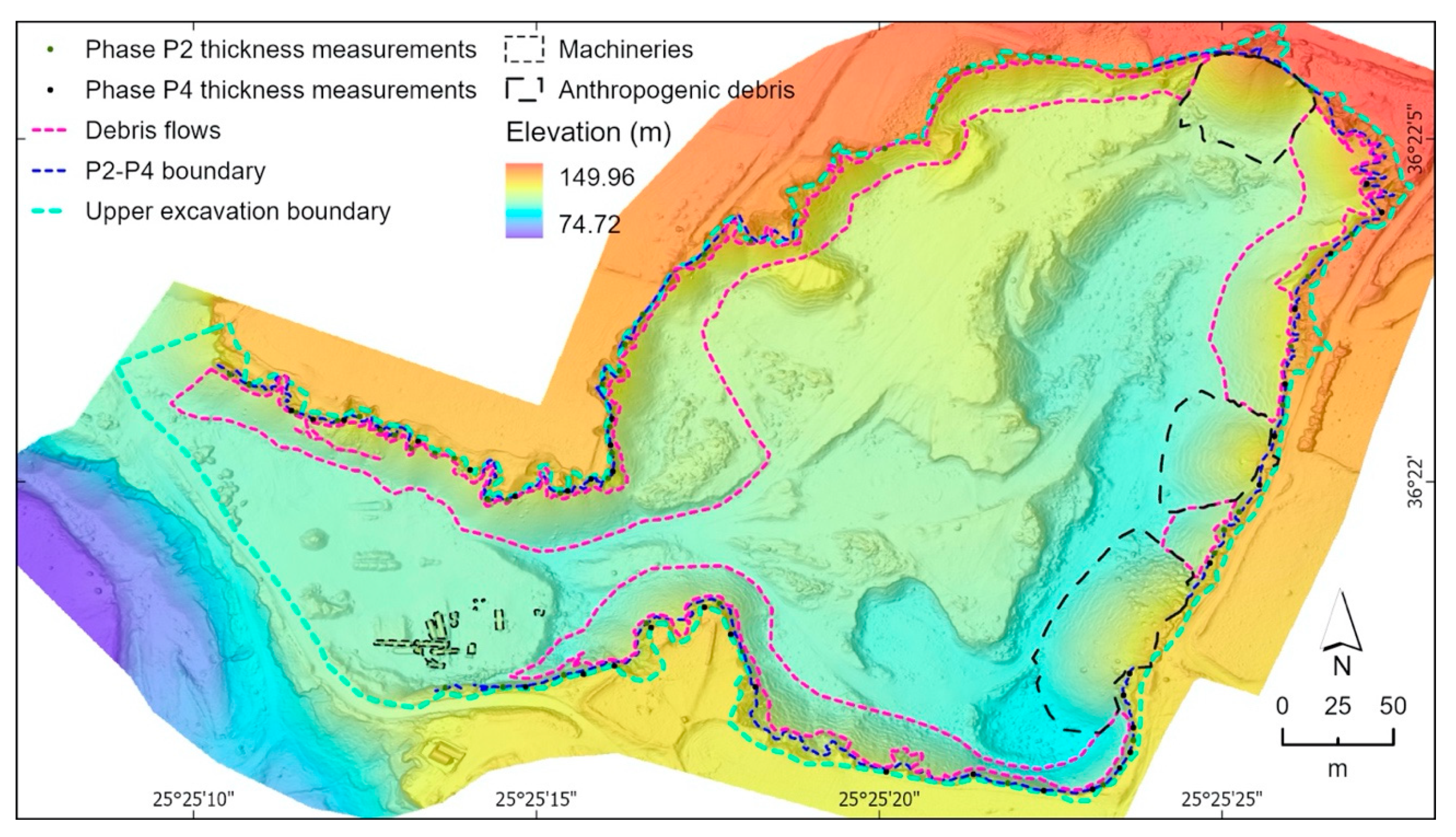
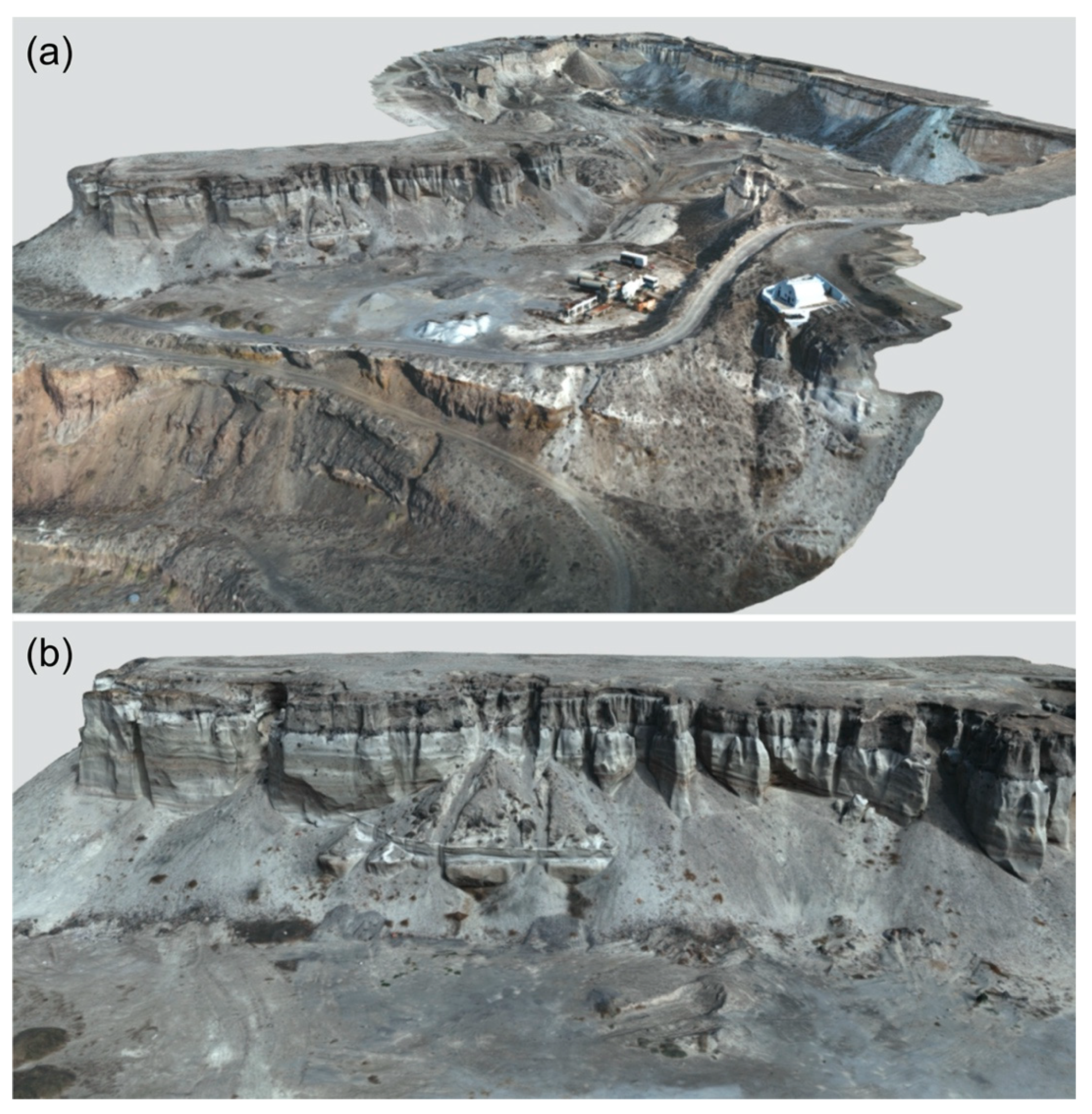
| Mission 1 | Mission 2 | Mission 3 | Mission 4 | Mission 5 | Mission 6 | Mission 7 | Mission 8 | ||
|---|---|---|---|---|---|---|---|---|---|
| UAV Images Acquisition (Nadir) | Flying Date | 14/10/2018 | 14/10/2018 | 16/10/2018 | 16/10/2018 | 16/10/2018 | 16/10/2018 | 17/10/2018 | 17/10/2018 |
| Flying Height (m) | 30 | 30 | 30 | 30 | 30 | 30 | 30 | 30 | |
| Frontal Overlap (%) | 90 | 90 | 90 | 90 | 90 | 90 | 90 | 90 | |
| Lateral Overlap (%) | 85 | 85 | 85 | 85 | 85 | 85 | 85 | 85 | |
| Flight Speed (m/s) | 1.6 | 1.6 | 1.6 | 1.6 | 1.6 | 1.6 | 1.6 | 1.6 | |
| Shutter Interval (s) | 2 | 2 | 2 | 2 | 2 | 2 | 2 | 2 | |
| Ground Resolution (cm/pix) | 0.9 | 0.9 | 0.9 | 0.9 | 0.9 | 0.9 | 0.9 | 0.9 | |
| Flying Time (mins) | 19 | 21 | 19 | 20 | 19 | 17 | 18 | 15 | |
| Covered Area (m2) | 16,653 | 18,824 | 17,068 | 16,325 | 9899 | 12,751 | 12,620 | 6837 | |
| Images Numbers | 554 | 567 | 485 | 584 | 486 | 522 | 447 | 251 |
| Mission 1 | Mission 2 | Mission 3 | Mission 4 | ||
|---|---|---|---|---|---|
| UAV Images Acquisition (Oblique) | Flying Date | 14/10/2018 | 14/10/2018 | 17/10/2018 | 17/10/2018 |
| Flying Height (m) | 10 ÷ 40 | 10 ÷ 40 | 10 ÷ 40 | 10 ÷ 40 | |
| Gimble orientation | −45° ÷ −70° | −45° ÷ −70° | −45° ÷ −70° | −45° ÷ −70° | |
| Flight Speed (m/s) | 1–2 | 1–2 | 1–2 | 1–2 | |
| Shutter Interval (s) | 2 | 2 | 2 | 2 | |
| Flying Time (mins) | 21 | 21 | 19 | 13 | |
| Images Numbers | 504 | 579 | 471 | 344 |
| SfM Photogrammetry processing | Alignment processing accuracy | High | ||||
| Dense Cloud processing accuracy | Medium | |||||
| Dense Cloud Points | 132,527,363 | |||||
| 3-D Tiled Model Resolution | 0.9 cm/pix | |||||
| DSM Resolution cm/pix | 3.7 cm/pix | |||||
| Orthomosaic Resolution cm/pix | 0.9 cm/pix | |||||
| SfM Photogrammetry Processing Time (hours) | ||||||
| Images Acquisition | Aligmennt | Dense Cloud | 3-D Tiled Model | DSM | Orthomosaic | Overall Processing |
| 3.7 | 15.68 | 4.50 | 13.10 | 0.10 | 2.50 | 39.6 |
| Volume | Literature | This Study |
|---|---|---|
| Total excavation of the Metaxa mine area | about 4.5 million m3 | - |
| Total Excavation of study area | about 1.3 million m3 | 1,660,141.89 m3 |
| Excavation of Phase 4 | - | 794,386.02 m3 |
Publisher’s Note: MDPI stays neutral with regard to jurisdictional claims in published maps and institutional affiliations. |
© 2020 by the authors. Licensee MDPI, Basel, Switzerland. This article is an open access article distributed under the terms and conditions of the Creative Commons Attribution (CC BY) license (http://creativecommons.org/licenses/by/4.0/).
Share and Cite
Antoniou, V.; Bonali, F.L.; Nomikou, P.; Tibaldi, A.; Melissinos, P.; Mariotto, F.P.; Vitello, F.R.; Krokos, M.; Whitworth, M. Integrating Virtual Reality and GIS Tools for Geological Mapping, Data Collection and Analysis: An Example from the Metaxa Mine, Santorini (Greece). Appl. Sci. 2020, 10, 8317. https://doi.org/10.3390/app10238317
Antoniou V, Bonali FL, Nomikou P, Tibaldi A, Melissinos P, Mariotto FP, Vitello FR, Krokos M, Whitworth M. Integrating Virtual Reality and GIS Tools for Geological Mapping, Data Collection and Analysis: An Example from the Metaxa Mine, Santorini (Greece). Applied Sciences. 2020; 10(23):8317. https://doi.org/10.3390/app10238317
Chicago/Turabian StyleAntoniou, Varvara, Fabio Luca Bonali, Paraskevi Nomikou, Alessandro Tibaldi, Paraskevas Melissinos, Federico Pasquaré Mariotto, Fabio Roberto Vitello, Mel Krokos, and Malcolm Whitworth. 2020. "Integrating Virtual Reality and GIS Tools for Geological Mapping, Data Collection and Analysis: An Example from the Metaxa Mine, Santorini (Greece)" Applied Sciences 10, no. 23: 8317. https://doi.org/10.3390/app10238317
APA StyleAntoniou, V., Bonali, F. L., Nomikou, P., Tibaldi, A., Melissinos, P., Mariotto, F. P., Vitello, F. R., Krokos, M., & Whitworth, M. (2020). Integrating Virtual Reality and GIS Tools for Geological Mapping, Data Collection and Analysis: An Example from the Metaxa Mine, Santorini (Greece). Applied Sciences, 10(23), 8317. https://doi.org/10.3390/app10238317









